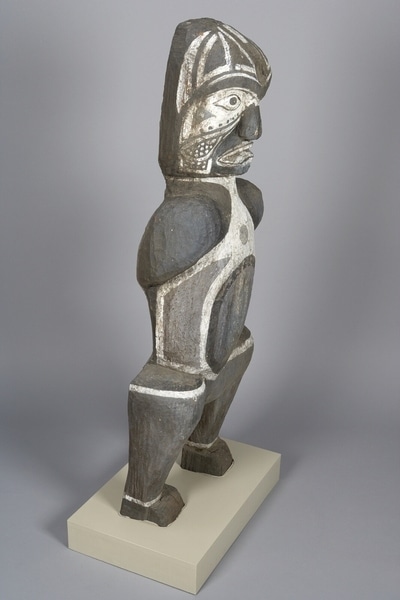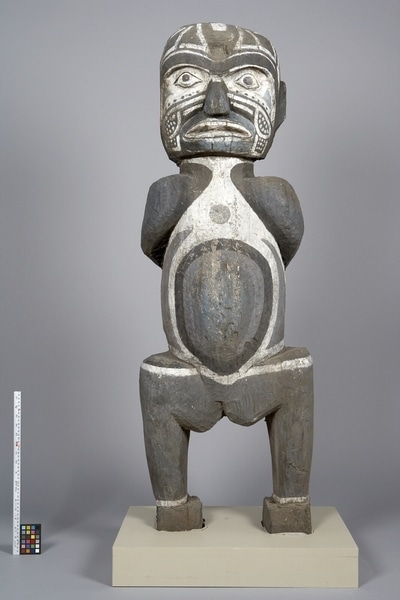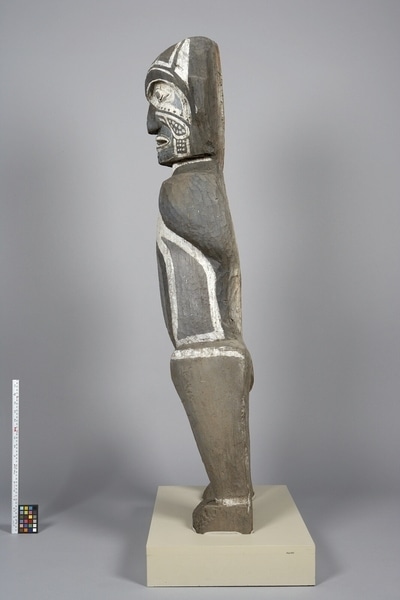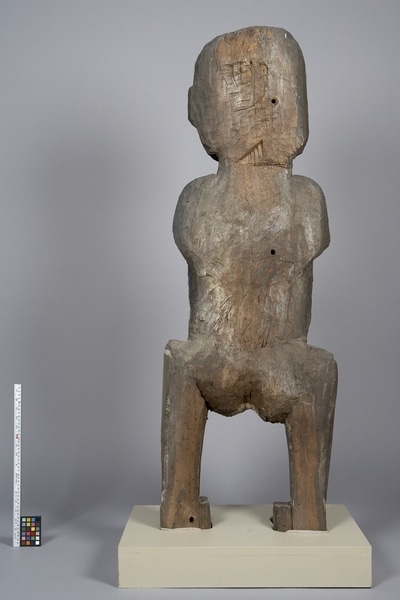Figure Item Number: Nb3.1331 from the MOA: University of British Columbia




Description
Standing figure with splayed legs and bent knees. Block-shaped feet, and prominent square-like head. Black-painted arm sockets appear as protruding sections, as if arms behind back. Face and body painted in black, white, and grey-blue. Face has white spotted sections on cheeks and jaw, and line of black dots under eyes. White and grey-blue paint on middle of chest and around belly, top of legs, and around ankles. Small black circle at centre of breast. Protruding brow, open mouth turned down at corners, recessed eye area, one ear on the right side.
History Of Use
According to an elder from the reserve near the Salmon River, this carving was a welcome figure, one of two that stood at each end of the central fire in the community house. They stood there to welcome those coming into that house. Representations such as this were owned by a chief and created for various purposes, e.g., as a figure of a chief and his speaker, or of a rival and his speaker, to be displayed at feasts. Also set up on high poles fronting the big houses, or on a gable top. Each figure would be named. Their meaning was known to the audience when displayed at a feast, and further elucidated by songs, speeches, and actions.
Narrative
The age of this figure is believed to be older than circa 1920 listed in the file--probably circa 1880-1890. Old mineral paint was used on the pole and the adze marks are visible.
Item History
- Made in British Columbia, Canada during 1890
- Collected during 1926
- Owned by Mrs. Edward Lipsett
- Owned by Alan F. Pierce before December 12, 1978
- Received from Alan F. Pierce (Donor) on December 12, 1978
What
Who
- Culture
- Kwakwaka'wakw
- Previous Owner
- Mrs. Edward Lipsett and Alan F. Pierce
- Received from
- Alan F. Pierce (Donor)
Where
- Holding Institution
- MOA: University of British Columbia
- Made in
- British Columbia, Canada
When
- Creation Date
- during 1890
- Collection Date
- during 1926
- Ownership Date
- before December 12, 1978
- Acquisition Date
- on December 12, 1978
Other
- Item Classes
- carvings & sculpture
- Condition
- good
- Accession Number
- 0502/0001